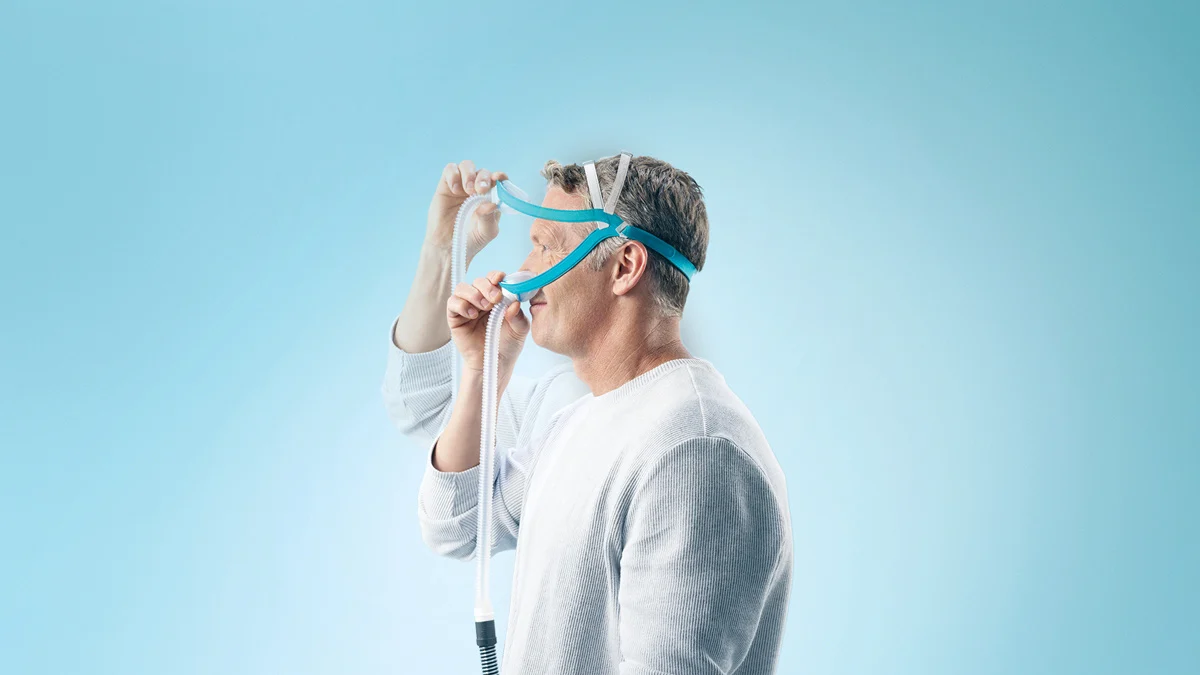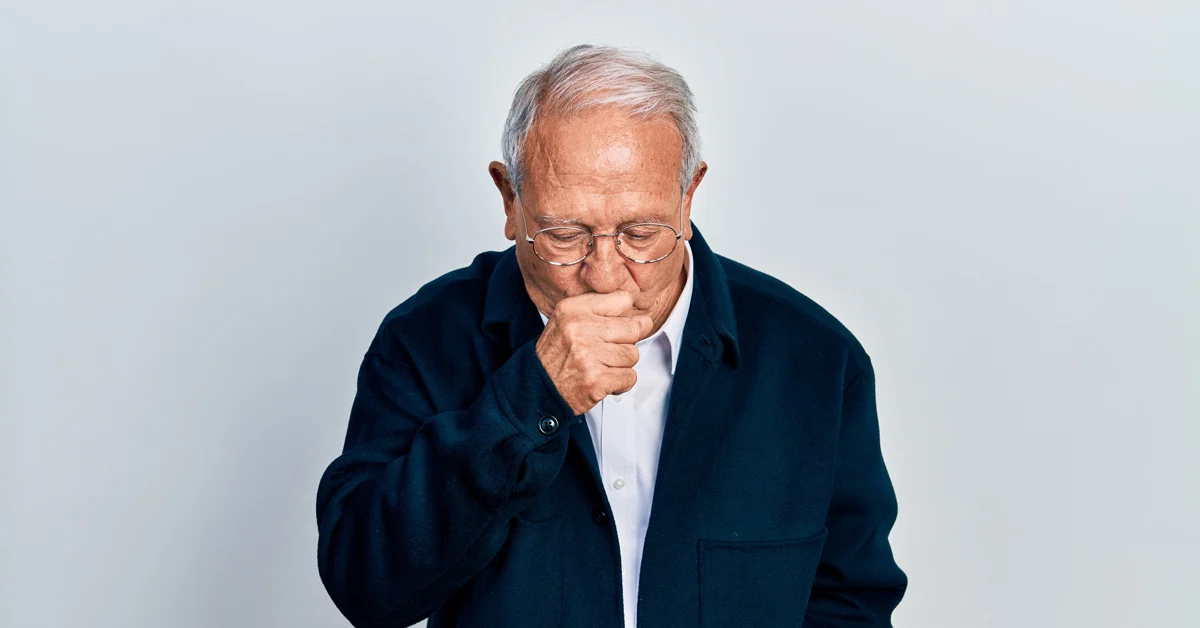COPD Breathing Techniques Can Help You Better Manage Your Symptoms
COPD—chronic obstructive pulmonary disease—is a condition where your lungs become inflamed and thickened, which blocks airflow and makes breathing more difficult.
Symptoms include a persistent cough, shortness of breath, wheezing, chest tightness, and excess mucus build-up in the lungs. Over time, these symptoms can get worse.
But there is a proven way to better manage your symptoms, particularly during flare-ups: practicing COPD breathing exercises.
Studies demonstrate that these techniques can help you manage your breathing, even during an attack. Breathing exercises make your lungs work more efficiently.
Apria’s Market Clinical Trainer and registered respiratory therapist, Lesley Williams, says, “When you practice these breathing techniques regularly, you can perform daily activities or exercise without getting short of breath, which increases your confidence and quality of life.”
Following are five of the most popular and effective breathing exercises.
1. Pursed-lip Breathing
This is an excellent technique to help you slow down breathing and remain calm, especially when you experience shortness of breath. Pursed-lip breathing should be performed before and after you exercise or whenever you engage in any strenuous activity.
This technique offers other advantages:
- Reduces the work of breathing
- Keeps airways open longer so your lungs can release stale air and allow new air to enter
- Improves the exchange of oxygen and carbon dioxide
Here’s how to perform pursed-air breathing:
- Sit comfortably and relax your neck and shoulders
- Breathe in slowly through your nose with your mouth closed for about two seconds. Use your abdominal muscles to help fill your lungs with air
- Purse or pucker your lips like you’re about to whistle or blow out birthday candles, then exhale slowly through your mouth
- Breathe out twice as long as you breathed in. Make a quiet hissing sound as you exhale
- Don’t force air out
- Repeat several times
Try to practice this technique 4-5 times every day until it becomes second nature.
Studies show that pursed-lip breathing may help people with COPD become more active.
2. Diaphragmatic Breathing
The diaphragm is a large, dome-shaped muscle that’s critical to breathing. It helps your lungs inflate and empty. In people with COPD, the diaphragm doesn’t function to its fullest capacity. The result: shortness of breath.
Diaphragmatic breathing (also called abdominal breathing or belly breathing) helps retrain this important muscle to work more effectively so you can breathe more freely.
Diaphragmatic breathing also helps increase oxygen blood levels, reduce blood pressure and heart rate, and improve muscle function when you exercise.
Here’s how to perform diaphragmatic breathing:
- Sit or lie down comfortably
- Relax the muscles in your neck and shoulders
- Place one hand on your stomach and one on your chest
- Breathe in slowly through your nose for 2 seconds, keeping your mouth closed
- Breathe out slowly through pursed lips for at least two to three times as long as your inhale
- Focus your breathing on your stomach: as you inhale, the hand on your abdomen should rise; as you exhale, it should lower
- If your stomach moves more than your chest, you are performing the exercise correctly
- Repeat
You can use diaphragmatic breathing with your daily activities, such as climbing stairs, taking long walks, and exercising.
Practice diaphragmatic breathing for 5-10 minutes each day. Apria’s Lesley Williams advises, “It’s a bit more complicated than pursed-lips breathing so you may want to ask your doctor for tips.”
3. Deep Breathing
This simple technique helps your body take in more fresh air while preventing air from getting trapped in your lungs. This reduces your risk of experiencing shortness of breath.
Here’s how to perform deep breathing:
- Sit or stand in a comfortable position
- Position your elbows slightly back. This helps your chest expand more fully
- Take a deep breath through your nose
- Hold your breath and count to 5
- Slowly exhale through your nose until all the inhaled air has been released
For best results, perform deep breathing with other breathing exercises for 10 minutes at a time, 3 to 4 times per day.
4. Huff Cough
In people with COPD, mucus more easily builds up in the lungs. This effective breathing technique helps you cough up mucus without tiring you out.
Here’s how to practice the huff cough:
- Take a seat, get comfortable
- Inhale through your mouth, taking in a slightly deeper breath than normal
- Use your stomach muscles to blow the air out through your mouth in three even breaths
- As you do, make the sound “ha, ha, ha” and imagine you’re exhaling air onto a mirror to make it steam
5. Coordinated Breathing
Feeling short of breath can be frightening. It increases your anxiety and may even make you hold your breath, depriving your body of the oxygen it needs.
Coordinated breathing is particularly helpful, especially when you exercise.
Here’s how to perform coordinated breathing:
- Breathe in through your nose before beginning an exercise or activity
- Purse your lips and breathe out through your mouth during the hardest part of the exercise
- As you exhale, count out loud to prevent you from holding your breath
If you feel short of breath, stop exercising and perform the pursed-lip breathing technique to help control your breathing. Then resume exercising.
Exercise Your Right to Breathe Easier
For people with COPD, these five breathing exercises offer a simple, effective approach to better manage breathing, improve lung function, and enhance overall health. Apria’s Lesley Williams adds, “Speak with your doctor about which of these exercises are most appropriate for your specific needs.”
References
1. Nall, R. (Updated 2020, April 22). Breathing Exercises with COPD.
Healthline. https://www.healthline.com/health/copd/breathing-exercises.
2. Breathing Exercises. American Lung Association.
https://www.lung.org/lung-health-diseases/wellness/breathing-exercises.
3. Breathing Techniques. COPD Foundation. https://www.copdfoundation.org/Learn-More/I-am-New-to-COPD/Breathing-Techniques.aspx.
4. Berry, J. (Updated 2022, February 10). Breathing techniques for people with COPD. Medical News Today. www.medicalnewstoday.com/articles/315044.
5. Breathing Exercises for COPD. University of Maryland Medical Center.
https://www.umms.org/bwmc/health-services/pulmonary-disease/copd/treatment/breathing-exercises#:~:text=Breathe%20in%20through%20your%20nose,long%20as%20when%20you%20inhaled.
6. Petrache, I, Bowler, RP. (2021, March 1). Breathing Exercises & Techniques. National Jewish Health. https://www.nationaljewish.org/conditions/copd-chronic-obstructive-pulmonary-disease/overview/lifestyle-management/breathing-exercises-techniques.
7. Diaphragmatic Breathing. Cleveland Clinic.
https://my.clevelandclinic.org/health/articles/9445-diaphragmatic-breathing.
8. Pursed Lip Breathing. Cleveland Clinic.
https://my.clevelandclinic.org/health/articles/9443-pursed-lip-breathing.
9. Yancey JR, Chaffee D. The Role of Breathing Exercises in the Treatment of COPD. Am Fam Physician. 2014;89(1):15-16.
LEGAL DISCLAIMER: Material in this newsletter is provided for general health education and informational purposes and to provide references to other resources only; it may not apply to you as an individual. While Apria Healthcare believes that the information provided through this communication is accurate and reliable, Apria Healthcare cannot and does not make any such guarantee. It is not intended to be a replacement for professional medical advice, evaluation, diagnosis, services or treatment (collectively, “medical treatment”). Please see your healthcare provider for medical treatment related to you and your specific health condition(s). Never disregard medical advice or delay seeking medical care because of something you have read on or accessed through this website. Reading this newsletter should not be construed to mean that you have a healthcare provider/patient relationship.

.png)



